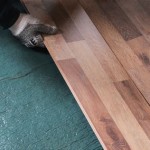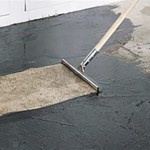Replacing Laminate Flooring Planks: A Comprehensive Guide to a Seamless Transformation
Upgrading your laminate flooring with a fresh and rejuvenated look is a relatively effortless task that can significantly enhance the aesthetic appeal of your home. The process of replacing laminate flooring planks involves a few essential steps:
1. Preparation: Gathering Materials and Clearing the Area
Before embarking on the replacement process, gather all the necessary tools and materials. These include a pry bar or flathead screwdriver, replacement planks, a tapping block, a hammer, and a utility knife. Clear the area to be replaced of furniture and other obstacles to provide ample workspace.
2. Removing the Damaged Planks
Identify the planks that need to be replaced and use a pry bar to gently pry them up at an angle. If there is any adhesive holding the planks in place, use a utility knife to carefully cut through it. Remove the damaged planks and dispose of them properly.
3. Preparing the Subfloor
Inspect the subfloor beneath the damaged planks to ensure it is level and free of debris. Level any uneven areas using a self-leveling compound or a floor leveling kit. Fill any gaps or cracks with wood filler or caulk to create a smooth and sturdy base for the new planks.
4. Installing the New Planks
Align the replacement planks with the existing flooring and gently tap them into place using a tapping block and hammer. Ensure the planks are flush with each other and there are no gaps or overlaps. Continue installing planks until the replaced area is complete.
5. Trimming and Finishing Touches
If any planks need to be trimmed to fit, use a utility knife or a circular saw. Run a bead of caulk along the edges of the replaced planks to seal any gaps and prevent moisture penetration. Allow the caulk to dry completely before replacing furniture and accessories.
Tips for Successful Replacement:
- Choose replacement planks that match the existing flooring in terms of thickness, color, and finish.
- If you are replacing a large area, consider numbering the planks to ensure they are installed in the correct order.
- Use a tapping block to distribute pressure evenly when hammering the planks into place.
- Allow the planks to acclimate to the room temperature for at least 24 hours before installation to minimize the risk of buckling.
- Seal the edges of the planks with caulk to prevent moisture damage and extend their lifespan.
Conclusion:
Replacing laminate flooring planks is a manageable DIY project that can revitalize your flooring and enhance the overall ambiance of your home. By following the steps outlined above and adhering to the recommended tips, you can achieve a seamless and professional-looking result. Enjoy the satisfaction of transforming your flooring and creating a fresh and inviting space.

Laminate Floor Repair Diy Family Handyman

How To Easily Replace A Damaged Laminate Floor Plank Interior Design Wonderhowto

How To Replace Lock Vinyl Flooring

How To Replace Laminate Flooring Episode 7 Howtospecialist Build Step By Diy Plans

How To Replace Damaged Flooring Plank Diy

How To Replace Laminate Floor In Your House Thediyplan

Laminate Flooring Lifespan Replacement And Maintenance Guide

Our Step By Guide For Laying Laminate Flooring

Replace A Damaged Board In Laminate Floor Rw Supply Design

How To Replace Laminate Floor In Your House Thediyplan
See Also







